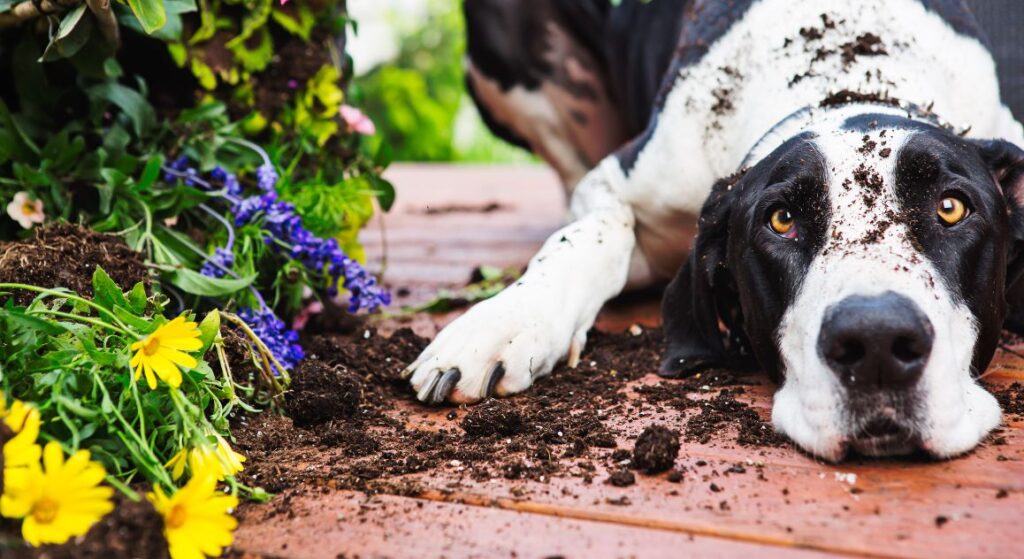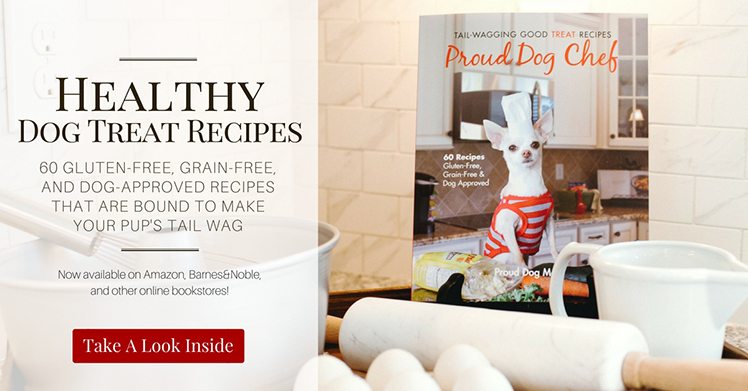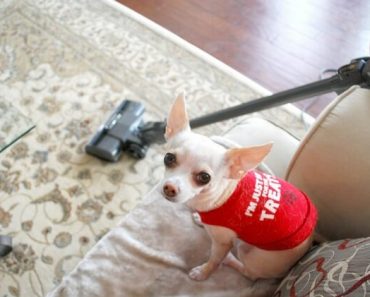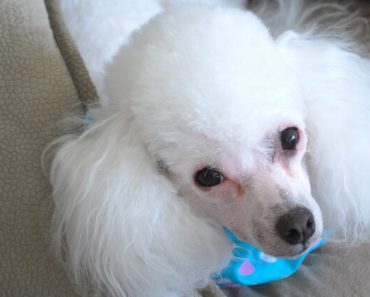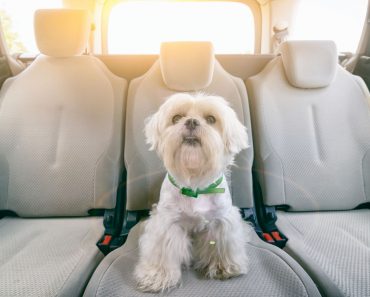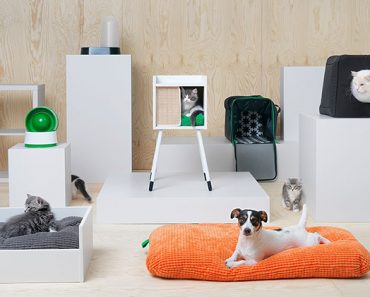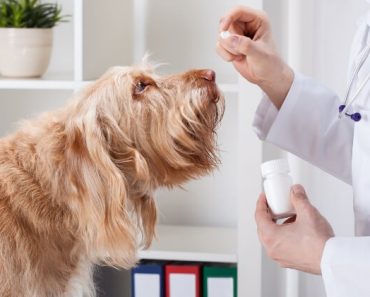Have you ever dreamed of cultivating a beautiful garden oasis yet hesitated because of your canine companions? As a fellow dog parent, I completely understand. There’s a fine line between creating a gorgeous garden that yields nutritious produce and keeping our furry family members safe. Last year, I took the plunge and grew my first garden, filled with lettuce, cucumbers, tomatoes, bell peppers, and a few herbs. It was fun to watch them flourish … and even more fun to eat them! Here are some simple tips to create your own dog-safe garden.
Choose Dog-Safe Garden Plants
This one is pretty obvious, but spend some time researching which plants are safe for dogs and which are considered toxic. Remember: Just because a particular fruit or veggie is safe for dogs, that doesn’t mean the green plant-parts are as well.
- Fruits and Vegetables: Foods like carrots, green beans, and cucumbers are generally safe. However, onions are other members of the allium family contain compounds that can be toxic to dogs. You’ll also want to be careful when planting tomatoes. While ripe tomatoes themselves are not toxic to dogs, the green parts of the tomato plant (i.e the leaves, stems, and unripe fruit) contain solanine and tomatine, which can be harmful if ingested in large amounts. Symptoms may include gastrointestinal upset, weakness, and confusion.
- Herbs: Herbs like dill, basil, parsley, and mint are considered safe for dogs, but avoid planting chives or lemongrass.
- Flowers: If you want to include flowers in your garden, opt for dog-safe varieties such as sunflowers, marigolds, pansies, petunias, or roses. Avoid plants like lilies, tulips, and azaleas.
If you suspect your dog has ingested a toxic food or plant, contact your local veterinarian immediately. If their office is closed, you can call the Pet Poison Helpline at 855-764-7661. They charge an $85 incident fee (all follow-up consultations are included).
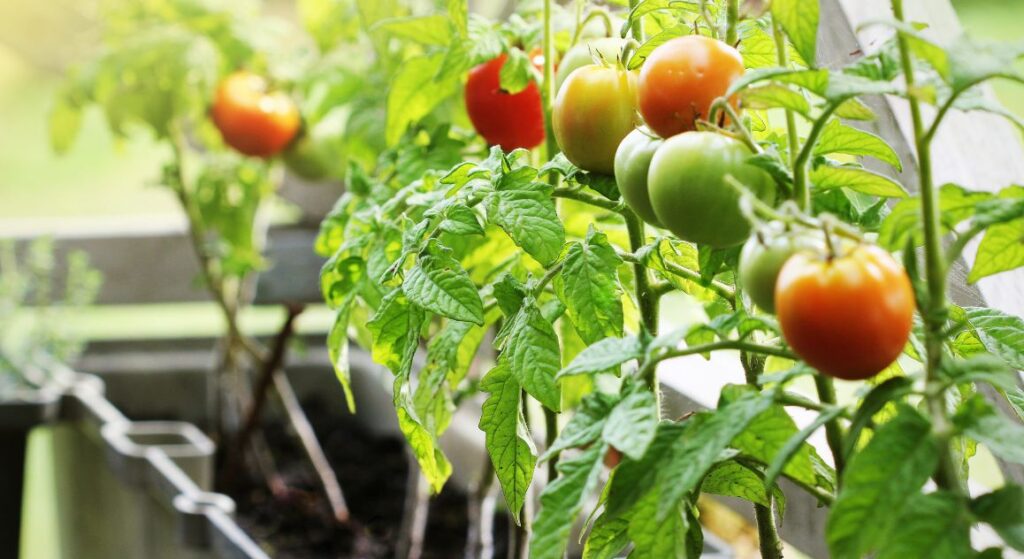
Create Physical Barriers
Even if your garden is filled with 100% dog-safe plants, it’s still best to create a barrier between them and your pup. This will help prevent potential damage to your garden beds (especially if your dog is a digger). Plus, it discourages your dog from going potty on your plants! Dog urine can contain concentrated nitrogen, which, when applied in excess, can “burn” plants and disrupt soil pH levels. Then there is doggy doo doo. As you can imagine, feces may contain bacteria and parasites that can contaminate soil and pose risks to human health if vegetables are grown in contaminated areas. Some barrier ideas:
- Fencing: Install a sturdy barrier around your garden to keep your dogs out. Some commonly used materials are chicken wire or a pre-fabricated wooden lattice panel. Whatever you decide on, choose a fence design that is tall enough so your dog can’t jump over it.
- Raised Beds: Consider using raised beds for your vegetables and herbs. Not only does this help with soil drainage and weed control, but it also makes it harder for dogs to access the plants.
- Containers: Grow herbs and small vegetables in containers that are placed on elevated surfaces, like tables or shelves. This helps keep them out of reach of curious canine noses.
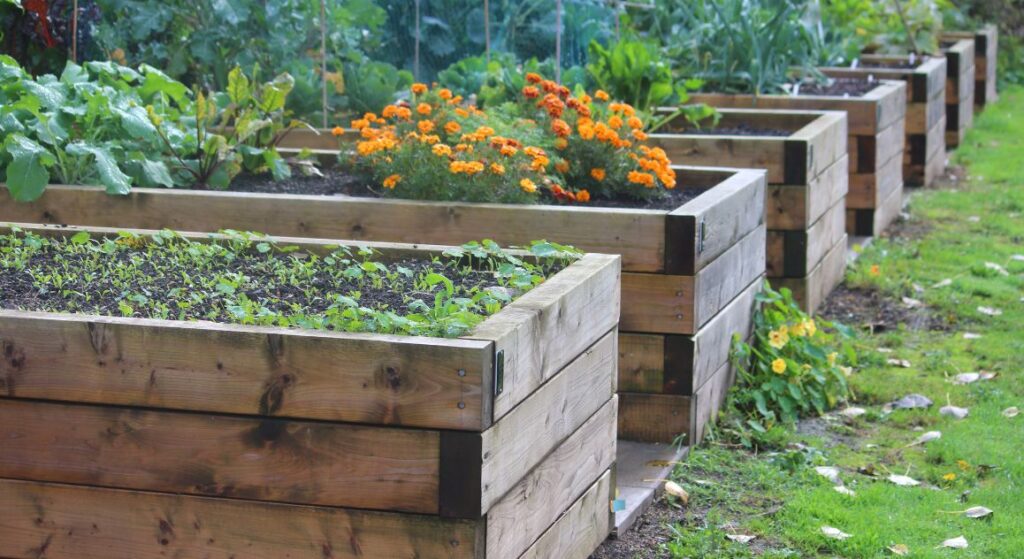
Use Safe Gardening Practices
- Avoid Harmful Chemicals: Opt for organic and pet-safe fertilizers, pesticides, and herbicides in your garden. Chemicals can be harmful if accidentally ingested by dogs or absorbed through their skin.
- Secure Tools and Equipment: Store sharp gardening tools in a secure place that’s out of your dog’s reach.
Keep a Watchful Eye
- Supervision: Keep an eye on your dog when they are in the yard, especially around the garden.
- Work on Commands: Not to sound dramatic, but commands like “Come,” “Leave It,” and “Drop It” can save canine lives. Work with your dog to nail down these basic commands!
- Regular Inspections: Routinely check your garden for any signs of damage or potential hazards. Remove any fallen fruits or vegetables, as these can attract your dog … along with other uninvited animals.
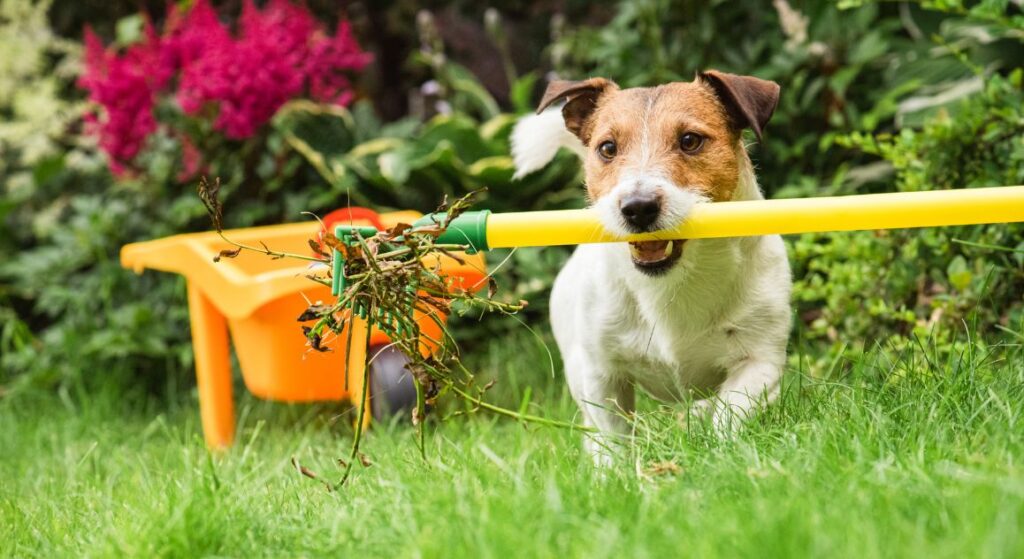
Create Dog-Friendly Zones in Your Backyard
Designate specific areas of your backyard as dog-friendly zones for activities like playtime and potty breaks. This will help entertain your dog while also discouraging interest in your garden. Make sure to provide shaded spots and set out freshly washed and filled water bowls for your dog to rest and hydrate. Also, if you have enough space in your backyard, consider designating one area for doggy enrichment activities. Some ideas:
- Home agility course, featuring tunnels and weave polls. If you search for dog agility courses on Amazon, you’ll find plenty of options. Some are affordable while others are quite pricy, depending on how serious you are about agility!
- Splash pad, for the pups who enjoy running through sprinklers. This is a great one for summer!
- Auto ball thrower, like the iFetch.
- A kiddie pool filled with sand to create a fun digging zone.
- Dog tug toy, which you attach to a tree. These are great for larger, high-energy dogs!
If you enjoyed these dog-safe garden tips, you may also like these reads:

